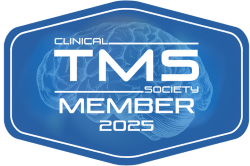
Scores of peer-reviewed journal articles indicate mental health diagnoses for depression increased worldwide between 2020 and 2022: can ketamine and other innovative depression treatments help people with severe depression or treatment-resistant depression?
A new study may have answers.
Depression in the U.S. in 2023: What’s the Situation?
In the wake of the COVID-19 pandemic, we’re now able to address a public health crisis that existed in the U.S. before the pandemic: the mental health crisis. Before 2020, evidence showed increasing rates of anxiety and depression among most demographic groups, particularly among adolescents and young adults. However, during the pandemic, rates of these mental health diagnoses increased across almost all demographics.
That means that we, as a nation, need to understand how to address this phenomenon, and offer people with mental health diagnoses the best available treatment. That’s what we’ll do in this article: discuss a new technique that may help relieve symptoms for people with treatment-resistant depression (TRD) who engage in treatment with ketamine.
First, we’ll look at data from studies that focused on examining rates of depression symptoms among adults before and during COVID-19. Then we’ll share data on the current prevalence rates of depression and depression treatment in the U.S. We’ll close by sharing data from a study on a new approach to ketamine treatment that preliminary evidence shows has a significant impact on reducing depressive symptoms among people with treatment-resistant depression.
Before, During, And After COVID-19: Rates of Depression and Depressive Symptoms
- The World Health Organization (WHO) indicates the global prevalence of depression increased 25% because of the COVID-19 pandemic
- A survey conducted by The Lancet shows these surprising figures:
- Before COVID: 8.5% of survey respondents reported depressive symptoms
- In early 2020, before the availability of vaccines: 17.8% of survey respondents reported depressive symptoms
- In 2021, 32.8 of survey respondents reported depressive symptoms
- A before/during study including over 1400 recipients showed examined the prevalence of mild, moderate, and severe depressive symptoms:
- Mild:
- Before: 16.2%
- During: 24.6%
- Moderate:
- Before: 5.7%
- During: 14.8%
- Severe:
- Before: 0.7%
- During: 5.1%
- A survey conducted by the Kaiser Family Foundation (KFF) shows that in 2023, 32.3% of adults in the U.S. reported symptoms of either anxiety or depression
- Mild:
Next, we’ll look at the results from a large-scale survey called the 2021 National Survey on Drug Use and Health (2021 NSDUH). For this annual survey, researchers collect data from over 70,000 participants nationwide. In 2021, the methodology for collecting mental health information change, meaning we cannot compare NSDUH data from 2021 with previous years. We can, however, compare this data with the targeted studies we list above, and discuss any similarities or differences we find. With that said, let’s look at the national prevalence data for major depressive episode – a proxy metric for major depressive disorder (MDD) – and then discuss the latest treatment innovation we mention above.
Here are the latest facts and figures from 2021 NSDUH.
Major Depressive Episode (MDE)
- Adults 18+: 8.3% (21.0 million)
- Adolescents 12-17: 20.1% (5.0 million)
MDE With Severe Impairment: Adults 18+
- Adults 18+ total: 5.7% (14.5 million)
- Adolescents 12-17: 14.7% (3.7 million)
Adults and Adolescents With MDE: Received Treatment for Depression
- Adults 18+ with MDE:
- 61.0% (12.6 million) received treatment
- Adolescents 12-17 with MDE:
- 10.6% (2.0 million) received treatment
- Adults 18+ with MDE with severe impairment:
- 64.8% (9.1 million) received treatment
- Adolescents 12-17 with MDE with severe impairment:
- 55.8% (1.6 million) received treatment
Those facts and figures give us a good idea about the status quo with regards to depression in the U.S. Prevalence rates increased dramatically during COVID-19, and while they have stabilized since the earliest data from the pandemic showed large increases, rates have not decreased. In fact, A survey conducted by the Kaiser Family Foundation (KFF) shows that in 2023, 32.3% of adults in the U.S. reported symptoms of either anxiety or depression.
That’s why this new study is important: patients and providers alike need to know how to meet the challenge presented by the increase in mental health treatment needs among people in the U.S.
Ketamine Treatment, Positive Images, and Depression: Can Adding Something Simple Improve Results?
We should start this section by ensuring we’re all on the same page, with an answer to this question:
What is ketamine?
Medical scientists developed ketamine in the 1960s as an anesthetic and pain reliever. Ketamine received FDA approval for medical use in humans in 1970. Interest in the use of a less powerful derivative of ketamine for depression began around the year 2000. Currently, a derivative of ketamine called racemic ketamine – brand named SPRAVATO® – is FDA-approved for the treatment of several mental health diagnoses. Ketamine itself – in the form of intravenous infusions (IV ketamine) – is used as an off-label treatment for treatment for treatment-resistant depression (TRD), major depressive disorder (MDD) with suicidal thoughts or behaviors, bipolar depression (BD-I & BD-II), anxiety disorders (AD), post-traumatic stress disorder (PTSD, and other mental health conditions.
The importance of ketamine and SPRAVATO® is their effectiveness in helping reduce symptoms in people with treatment-resistant diagnoses quickly, with positive results that persist longer than typical antidepressants, whose effect fades when a patient stops taking the medication.
That’s significant because roughly 30 percent of people with severe depression do not experience relief from a traditional treatment approach, which involves a combination of psychotherapy and antidepressant medication.
We’ll say that again: almost a third of people who engage in treatment for depression do not experience any improvement.
In many cases, ketamine can help people with TRD. Some people report symptom relief within hours. However, some people who engage in treatment with ketamine report symptom relief fades within a month of a ketamine infusion.
A standard course of treatment with IV ketamine infusions involves six (6) ketamine infusions over 2-3 weeks, with booster infusions scheduled as needed. Some patients do not require boosters at all, while some require them monthly or every six months: the schedule depends on the patient.
That’s where this research comes in. To keep costs for patients down and extend the duration of symptom relief, they experimented with a simple idea: after a single ketamine infusion, show patients positive images paired with positive words about themselves and track the results.
Ketamine, Positive Self-Image, and Symptom Relief
To conduct this study – “A Novel, Brief, Fully Automated Intervention to Extend the Antidepressant Effect of a Single Ketamine Infusion: A Randomized Clinical Trial” – researchers recruited 154 adults between the ages of 18 and 60 with a diagnosis of treatment-resistant depression (TRD). They divided the participants into three groups:
- The treatment group. This group of patients received one infusion of ketamine. The next day, they participated in an intervention called ASAT, or “automated self-association training,” which we’ll describe below.
- Control group 1. This group received ketamine and no ASAT intervention.
- Control group 2. This group received the ASAT intervention, but instead of a ketamine infusion, received a saline placebo.
Let’s talk about the ASAT intervention. Previous research showed that following a ketamine infusion, patients were capable of experiencing “rapid shifts in implicit self-association” that suggests “ketamine creates the requisite malleability in information processing” that may enable therapists “…to capitalize on this plasticity and to shift self-associations in a positive direction.”
Here’s how the ASAT intervention worked. Beginning the day after the ketamine infusion, patients received:
- Eight 15- to 20-minute sessions, delivered twice a day for 4 consecutive days
- Sessions were designed to reinforce implicit associations between positive traits and self-referential stimuli, as described above.
We’ll explain that last bullet point. During an ASAT session, participants viewed words such as “happy, sweet, attractive” alongside pictures of themselves. In addition, they viewed pictures of other happy, smiling, people, which were also paired with positive words or phrases. Note: the ASAT sessions were supervised by a clinician, but were fully automated, and can be delivered via electronic media and do not require any return, in-person visits.
Ketamine + ASAT (Automated Positive Reinforcing Words and Images)
Treatment Group
- One day (24 hours) post-treatment: Significant symptom relief for all patients
- One month (30 days) post-treatment: Significant symptom relief persisted for the entire month
Ketamine + No ASAT
- One day (24 hours) post-treatment: Significant symptom relief for all patients
- One month (30 days) post-treatment: Symptom relief faded to pre-treatment levels
Placebo + ASAT
- One day (24 hours) post-treatment: Moderate symptom relief for all patients. Symptom relief was less robust than the treatment group.
- One month (30 days) post-treatment: Moderate symptom relief persisted for the entire month
A Simple Addition Improves Results
This study is relevant for several reasons.
First, it’s responsive to the current mental health environment in the U.S. We need research like this to address the increase in rates of mental health diagnoses nationwide. These increases began before the COVID-19 pandemic, were exacerbated by the pandemic, and have not decreased since. Therefore, this research meets a clear and demonstrated need in the general population.
Second, it builds on a new and innovative approach to treatment-resistant depression – IV ketamine – which evidence shows can relive the symptoms of treatment-resistant depression.
Third, it shows that a cost-effective addition to ketamine treatment – ASAT – can significantly extend the effects of ketamine symptom reduction for depression after only one infusion. That’s an important finding, because most courses of treatment with IV ketamine involve 2-3 sessions, with additional boosters as needed. The addition of an automated component that a patient can engage in via computer – at home – may be a way to reduce costs and improve treatment efficacy at the same time. Here’s how the study authors describe the results of this research:
“The global burden of depression is extremely high and is expected to continue to increase within the current context of a significant pandemic. There is an urgent need for novel treatment approaches, particularly those that can provide relief efficiently and at scale. If the present results can be replicated, this novel, integrative treatment may provide a method to urgently bring relief and to efficiently extend this relief via safe, low-cost, portable techniques.”
What We Can Do and Where We Can Go From Here
At the beginning of this article, we indicate that in the post-pandemic world – if indeed that’s where and when we are – we’re ready to address the mental health crisis that existed before the pandemic. All evidence indicates the psychological and emotional fallout of COVID-19 is both ongoing and evolving. Trauma individuals experience during the pandemic may not appear as mental health symptoms for months or years. Mental health disorders present before the pandemic may have escalated from moderate to severe during the pandemic, without returning to a pre-pandemic baseline.
Therefore, when we say we’re ready for what’s next – meaning we’re ready to meet the increased mental health needs of our population in this new era – one part of what we mean is that we’re ready to explore new and innovative ways to offer treatment and support to people who need it the most. Treatment-resistant depression, and other treatment-resistant mental health disorders, can make typical daily life almost impossible for people with severe and disruptive symptoms.
What we can do for patients is offer them the most effective, innovative treatments available. Where we go from here is forward. We use evidence-based strategies – like this new addition to IV ketamine treatment – to offer symptom relief to people with treatment-resistant disorder who may have given up hope on finding relief and reclaiming their lives.
The results of the study we discuss above tell us that we now have another tool at our disposal, which we can use to help people with treatment-resistant mental health disorders start the road to recovery, when previously recovery may have seemed out of reach.


